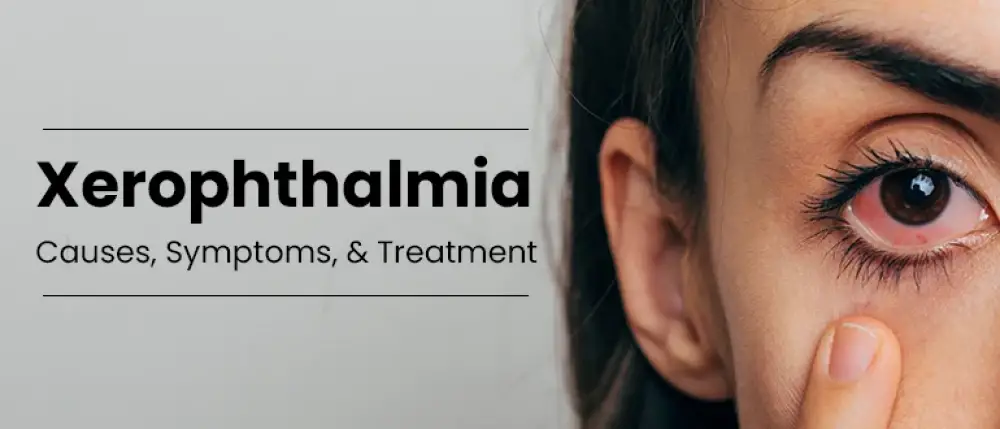Subscribe to get weekly insights
Always stay up to date with our newest articles sent direct to your inbox
Published on 5 Aug, 2024
Updated on 6 Apr, 2025
1092 Views
4 min Read

Written by Rashmi Rai
favorite1Like
Deekila, a lovely 8-year-old, loved playing outdoors. She enjoyed it all the more whenever she visited her grandparents in Odisha. Lately, however, she has been complaining about itchy, irritated eyes, especially during the afternoons. Initially, Deekila’s parents thought it was a sign of common eye irritations due to dust and dirt. However, how she used to chase her friends around the playground changed. And then, she started avoiding games that require good eyesight in the fading light.
Concerned, Deekila’s mother took her to the doctor. Upon close examination, the doctor revealed that Deekila has xerophthalmia, a condition caused by a vitamin A deficiency.
The World Health Organisation estimates that 254 million children suffer from vitamin A deficiency globally, with 2.8 million children suffering from early xerophthalmia symptoms. Not just this, xerophthalmia is the primary cause of childhood blindness, accounting for approximately 350,000 occurrences each year. In India, xerophthalmia remains a major public health concern.
Xerophthalmia is predominant in children due to vitamin A deficiency. According to recent studies, the frequency is 5.4% in rural regions. Deekila’s mother further researched the prevalence of this disease in India. Surprisingly, she found that xerophthalmia is more dominant in rice-eating states, including Odisha, Tamil Nadu, Bihar, West Bengal, and Andhra Pradesh. This is because rice does not contain Carotene, a Vitamin A precursor.
Furthermore, research demonstrated a strong link between xerophthalmia and anaemia, with greater prevalence rates seen in children with anaemia. So, she studied to find more about the root cause.
Xerophthalmia disrupts the normal functioning of the eyes. In short, a lack of vitamin A leads to this degenerative eye condition. Dry eyes and tear ducts are a strong sign that you may have vitamin A deficiency. Vitamin A is the fuel for the human eye, keeping it lubricated.
She came across another common term that made her need clarification. It was keratomalacia. After further research to understand the difference between xeropthalmia and keratomalacia, she found that xerophthalmia is a specific term for a group of eye conditions resulting from vitamin A deficiency.On the other hand, Keratomalacia is one of the conditions grouped under xerophthalmia. It is a subset of xerophthalmia, which softens the cornea.
Deekila’s mother now started recalling the symptoms her daughter complained about. She found that the signs and symptoms of this condition start showing up gradually in a certain order/stage. Listed below are some of the xerophthalmia symptoms that you need to pay attention to:
Xerophthalmia can be diagnosed using one of the following techniques:
For Xerophthalmia treatment, the doctor will initially prescribe vitamin A supplements. The doctor will recommend topical antibiotics and artificial tears if the infection is major. However, other conditions may need serious medical attention, depending on the severity.
Although the doctor prescribed a list of medications to Deekila, her mother wanted to find ways to reduce the further development of the condition by natural means. The best way is to ensure sufficient quantities of Vitamin A in the diet. Some of the excellent sources of Vitamin A include:
Xerophthalmia, if untreated, can lead to severe and potentially irreversible side effects. The worst include corneal ulceration and melting, known as keratomalacia. The worst-case scenario is it can cause significant vision loss or complete blindness.
In addition, the condition can also cause severe dryness and thickening of the conjunctiva and cornea, leading to discomfort and increased vulnerability to infections. These severe outcomes highlight the critical need for early detection and appropriate treatment to prevent long-term damage.
Given the severe implications of xerophthalmia, having a comprehensive health insurance plan is essential. Care Health Insurance provides solid financial coverage for various medical conditions, including those affecting eye health. It ensures that individuals get early detection and care, access to timely medical emergencies, necessary medications, and specialist consultations without facing the burden of out-of-pocket expenses. All in all, it acts as a financial shield and helps you and your loved ones fit financially, emotionally, and physically.
>> Also Read: 5 Nutrients That Will Protect Your Eyes
Disclaimers: The above information is for reference purposes only. Kindly consult your general physician for verified medical advice. The health insurance benefits are subject to policy terms and conditions. Refer to your policy documents for more information.
Thyroid : मामूली नहीं हैं महिलाओं में थायराइड होना, जानें इसके लक्षण और घरेलू उपचार Vipul Tiwary in Diseases
शुगर कंट्रोल कैसे करे? जानें, डायबिटीज में क्या खाना चाहिए Vipul Tiwary in Health & Wellness
हाई ब्लड प्रेशर को तुरंत कंट्रोल कैसे करें? देखें इसके उपाय Vipul Tiwary in Diseases
पैरों में दर्द किस कमी से होता है? जानें, इसके घरेलू इलाज Vipul Tiwary in Health Insurance Articles
Cold Hands? Act Immediately Against Raynaud’s Phenomenon Jagriti Chakraborty in Diseases
Understanding Azotemia: Meaning, Causes, Treatment & ICD 10 Guide Leena Khowal in Diseases
Prolactin Hormone: Functions, Normal Levels, Causes, Symptoms & Treatment Guide Yashita Sinha in Diseases
Lymphatic Filariasis: The Silent Parasite Millions are Ignoring Jagriti Chakraborty in Diseases
Always stay up to date with our newest articles sent direct to your inbox
Loading...